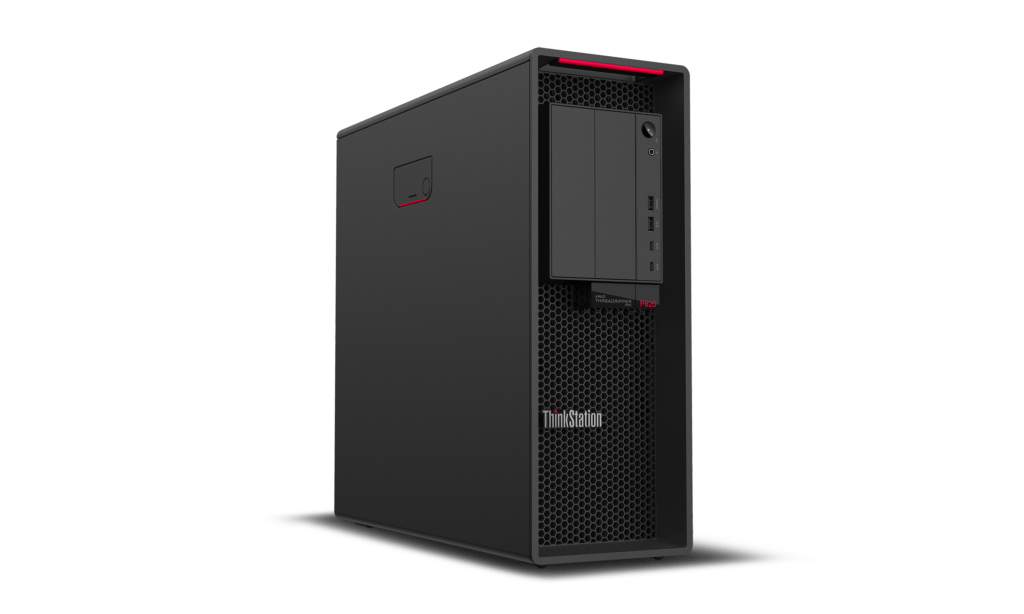(Disclosure: all the companies mentioned are clients of the author)
Behind Lenovo’s very successful quarter (17% revenue and net income growth of 62% year-over-year), there was one interesting statistic which was that the Lenovo ThinkStation P620 has reached 60% market share (IDC source) at the top end of the professional workstation market, a segment historically dominated by Intel. What makes this particularly interesting is that Lenovo did this with a unique product based on AMD’s Threadripper processor, which was initially targeted at the gaming market.
Using a consumer processor to dominate the most professional group in the professional workstation space, the very top of the engineering performance pyramid is unprecedented in modern times. Typically, workstations have dedicated workstation parts and can use server parts, but workstation vendors have avoided gaming parts like the plague.
Let’s talk about misconceptions this week, one of them being that last sentence.
Workstation buyers put performance ahead of all else
A workstation buyer is more like a consumer buyer than a typical corporate buyer. IT specifies, often with surprisingly little input from users, what employees use with one big exception, workstations. Granted, in the current environment, Bring Your Own PC efforts have recently flourished as companies struggled to provision employees who were suddenly working from home, but the normal mode of operation is that IT treats most users like they have no idea what they need, and frankly, most times they are right.
However, engineers can override IT or just set the specification for what they need and may find themselves in conflict with IT standards. However, they are so critical to the operations of the company they can often ignore those standards if they can justify performance-related reasons for this variance that are supported by their management.
I learned this when looking at gaming PC company volumes and finding out that a significant number of gaming rigs go to engineers and are used as workstations. This was because gaming machines provided more performance for the dollar than workstations did, and not all engineering applications needed some of the unique components, like specialized memory, which were more common in workstations.
However, this did suggest that there was an unmet need for a workstation-class product that was designed around a high-performance gaming core.
Threadripper and Lenovo to the rescue
AMD’s creation of Threadripper was very risky. It outperformed every other processor in the market from any vendor. But gaming focus had shifted from CPUs to GPUs over the prior years, suggesting the market for this product would be severely limited to professional gamers and those creating gaming content where that price delta could be justified.
But Lenovo and AMD recognized an opportunity to address the engineers that were okay with gaming hardware but still wanted a product that could comply with IT standards and have the certifications needed to run their preferred software. This laid the foundation for Lenovo’s ThinkStation P620 and the first generation Threadripper Pro Workstation, which is really no longer a gaming-focused part, and effectively put Lenovo on the map with a product that was not only well-differentiated but addressed a large, unmet need in the market, particularly for those creating digital content (graphics designers, animators, etc.). Even though Threadripper was initially positioned as a gaming part, Lenovo was able to work with AMD to create a more focused Pro part and use it to gain segment dominance in a segment traditionally dominated by Dell and HP. It was an incredibly risky move that paid huge dividends.
Wrapping up: Fortune favors the bold
I am a big believer in the saying “fortune favors the bold,” and Lenovo and AMD’s move to embrace Threadripper and turn it into a Pro part took them from an also-ran in the workstation market to a segment leader. It was a massively bold move, but the outcome for anyone who studied the segment would not have been a surprise if they had just looked at the sales of gaming machines into workstation segments. It was clear there was an unmet need for a workstation that had a massive performance advantage, given performance is the thing that drives workstation purchases.
Lenovo is willing to take risks. Its acquisition of Motorola, which looked very ill-advised at the time, is another risk that is now paying off, given the current market share and revenue gains by that unit. Lenovo is the only vendor with the product breadth to take on Apple, and it’s better positioned geographically with better global distribution of corporate leadership, which is also unique to the company. Thanks to Lenovo’s willingness to make a bold decision, it, along with AMD, now dominates high-end workstations. Fortune favors the bold indeed.



